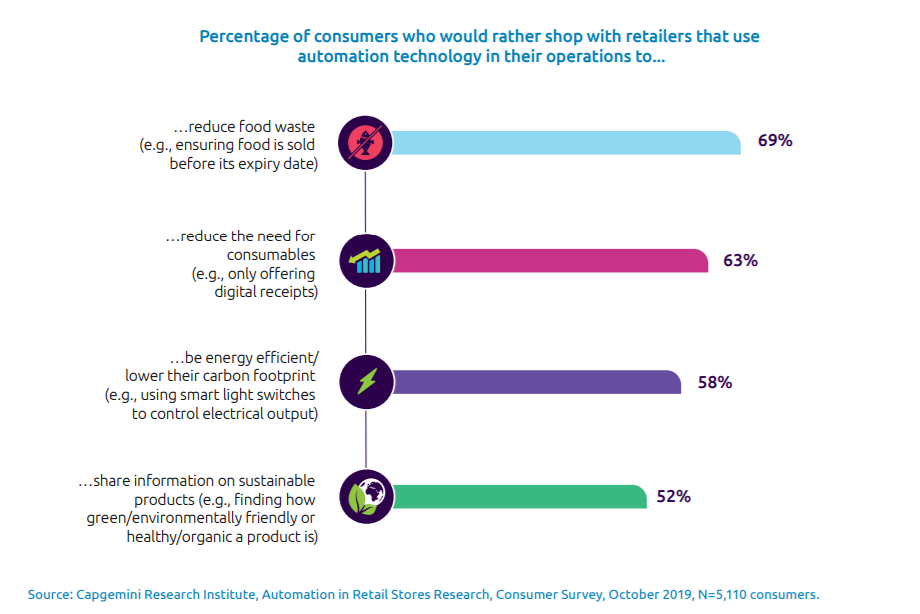Vending machines in retail: your omnichannel strategy
In our previous post vending machines in retail, we have already discussed how automation technology can serve as a solution to so-called "customer pain points". The implementation of vending machines as automation technology, as well as a merging of e-commerce with physical trade are "best practice" here.
A big point that spoke for innovation was its ability to ensure more sustainability in retail. Consumers were particularly motivated by the abilities of retail technologies to reduce food and energy waste. The innovations would also create better access to more sustainable products.

What are the advantages of automation in retail?
The study found that consumers are willing to buy products in stores that they previously always bought online if they use automation methods. This statement reflects one, if not the most important, point of division in modern commerce; the online trade. It turns out that many consumers have now developed a strong preference for online shopping. This is characterized by a high level of convenience, simple payments and detailed product information.
So the challenge for retailers is to offer the convenience of online shopping in-store; Shortened waiting times, self-checkout and an interactive shopping experience that leaves no questions unanswered.
Capgemini, 2021

Vending machines can help with exactly this point. The operation via an interactive touch screen gives the customer all the information he needs at a central point. The interface has almost the same qualities as a product information page in an online shop. Search functions and integrated communication channels help consumers to find the right product. Payment is purely digital via ATM or credit card. Numerous other payment methods such as GooglePay or Alipay are also available.
The advantages for trading companies
In-store automation also has a multitude of advantages for companies. On the one hand as a result of the increased "customer experience", on the other hand due to reduced operational effort.
60% of respondents indicated that they would increase their shopping behavior if they were given extensive product information from an automated store. Respondents said they increased their shopping frequency by an average of 21%.

Retailers who were asked to what extent automation technology influenced customer behavior made the following three statements:
- Increased visitor numbers
- More sales compared to sales without automation
- Longer customer stays in the store.
In addition, however, automation also leads to some operational advantages for operators. The availability of products increases drastically, which in turn avoids high costs for incorrect order quantities in purchasing. In addition, personnel costs are saved through smart shelving systems and vending machines.
Martin Wild, Chief Innovation Officer of MediaMarkt Saturn Retail Group, describes it as follows: "The smartphone has become a kind of remote control for many people's everyday lives... The positive feedback from our customers on our first pilot projects in Munich and Innsbruck prompted us to self - to offer checkout on a large scale from now on.”
Trading companies report strong cost reductions, especially through the offer of click & collect services. On average, this results in a 10 percent cost saving. An example of this is the "Pickup Towers" for online orders, which were first introduced by Walmart in 2017.
We have been working successfully on robotics and automation solutions for retail for over 10 years. Our products include vending machines, click & collect pick-up stations as well as automation solutions for workflow and hardware management.
For more interesting news from the field of automation technology, read our other blog posts.
- Swipe & Select: Erleichterung des Zugangs zur Gesundheitsversorgung durch Apothekenautomaten
- Pharmacy vending machines and the power of seamless integration
- Shortage of staff in the pharmaceutical industry
- Night counter terminal in pharmacies
- Myths about automation
